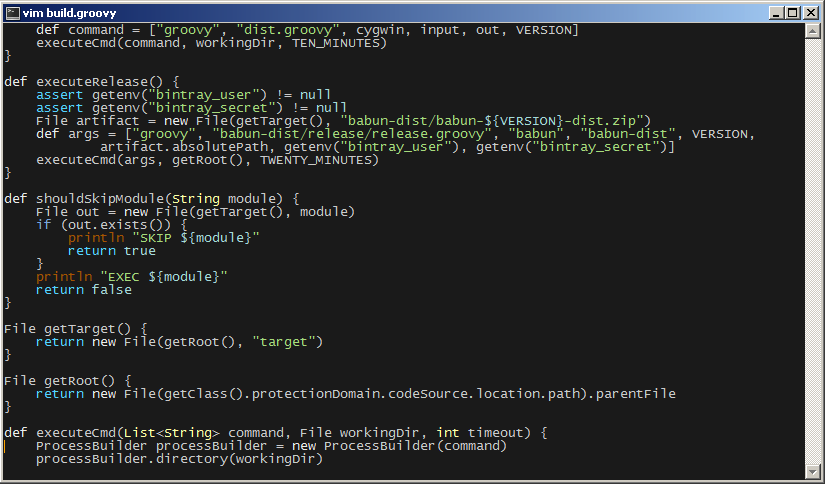

To take the full screen, I can hit alt+m, as in monocle layout, meaning Screen, I can use the alt-l shortcut mentioned previously. Letters of an application, for example, opera, the web browser.Ī new application, whether opened by terminal command or using dmenu, Now hit alt+p and you'll see the handy dmenu on the top. One.) Alt+j and Alt+k move focus to the window below and above The keyboard shortcuts are familiar to vi users, l moving a vi cursor to The man page gives the various default keyboard shortcuts.Īlt+h will decrease the size of the master area. The left hand terminal is the master area, the right side is used for
#Uxterm git windows
So, if you're on Fedora and installed dwm with yum installĭwm, substitute the Windows key for alt in all of these shortcuts.
#Uxterm git mod
Note that in Fedora's version, they have changed the mod key from Mod1,Īlt, to Mod4, the Windows key, between Ctrl and Alt on most US (Note that "stacking", is also a term for window managers like flxubox and open box, that Have three terminals, stacked top to bottom. Do it a 4th time, and the right half of the screen will now Time and the right half of the screen will now have a top and a bottom With the screen now divided into a left and right half. Hit alt+shift+return again, and you'll get a second terminal, Using default keybindings (we'll cover this in a minute), hitĪlt+shift+return and you'll get a terminal that takes up the entire

In FreeBSD, it doesn't seem to recognize the 1m so use 60 (for seconds) Or put it in your xinitrc before starting dwm-that is, the exec dwm should be the last line in ~/.xinitrc. You can run the script as a script in itself (putting #!/bin/sh at the top), This changes my status bar to something like 11:01 (if I'm writing it on April 22 at 11:01 AM). While true do xsetroot -name "$(date +"%F %R" )" sleep 1m done & Many people have little scripts to give a bit more inforation in the status bar (the right side, that has dwm and version). The left side will have numbers 1-9, for each tag. In the upper right, there will be a small indicator, with dwm and the version, e.g., dwm-5.9-1. You will see nothing but a black screen with a gray bar at the top. Regardless, we'll assume that you've managed to log into dwm. I would try googling add dwm to gdm or kdm or whatever To add it to your login menu, but, as I don't use a gui login, I don't Once installed, add to your $HOME/.xinitrcįor those of you who start with graphical login, there should be a way It a little easier for you to use and customize dwm. This isn't going to be a detailed tutorial, but hopefully, it will make Yourĭistribution might also have its version of a wrapper script. A good cheatĪs stated above, Fedora, at least, is an exception to this rule. However, the default keybindings are fairly reasonable. If your distro installs it as aīinary, you might not have that config.h file readily available.
#Uxterm git install
One reason to download it rather than install it from yourĭistribution's package manager is that, as mentioned, to customize it, If yourĭistribution doesn't have such a script, you're probably better offĭownloading it and compiling it yourself. Some distributions, for example,įedora, have a nice wrapper script that will do it for you. Isn't terribly difficult, even if one doesn't know C, and the Manually edit the included config.h file and recompile. Some folks get put off by the fact that to configure dwm, one has to Work with 6.2 with small changes that should be evident if you look at the Much of this article is written about older versions, but it should Though, you can probably choose to ignore upgrading it without losing very The changes are minor, butĮnough to break an existing config. May have to re-edit your custom config.h. (The link goes to 's screenshots-they're the ones whoĪs of dwm-6.2 the default file has changed enough so that you On some of them, includingĭwm, this is done dynamically, that is, as you open a new window, it Window and sorts them into their own space. Tiling window managers can be useful, especially on netbooks.įor those unfamiliar with them, a tiling window manager takes each Although I generally useĮither fluxbox or openbox some of the small Tiling window managers can be quite handy. Using dwm A Look at the DWM Window Manager


 0 kommentar(er)
0 kommentar(er)
